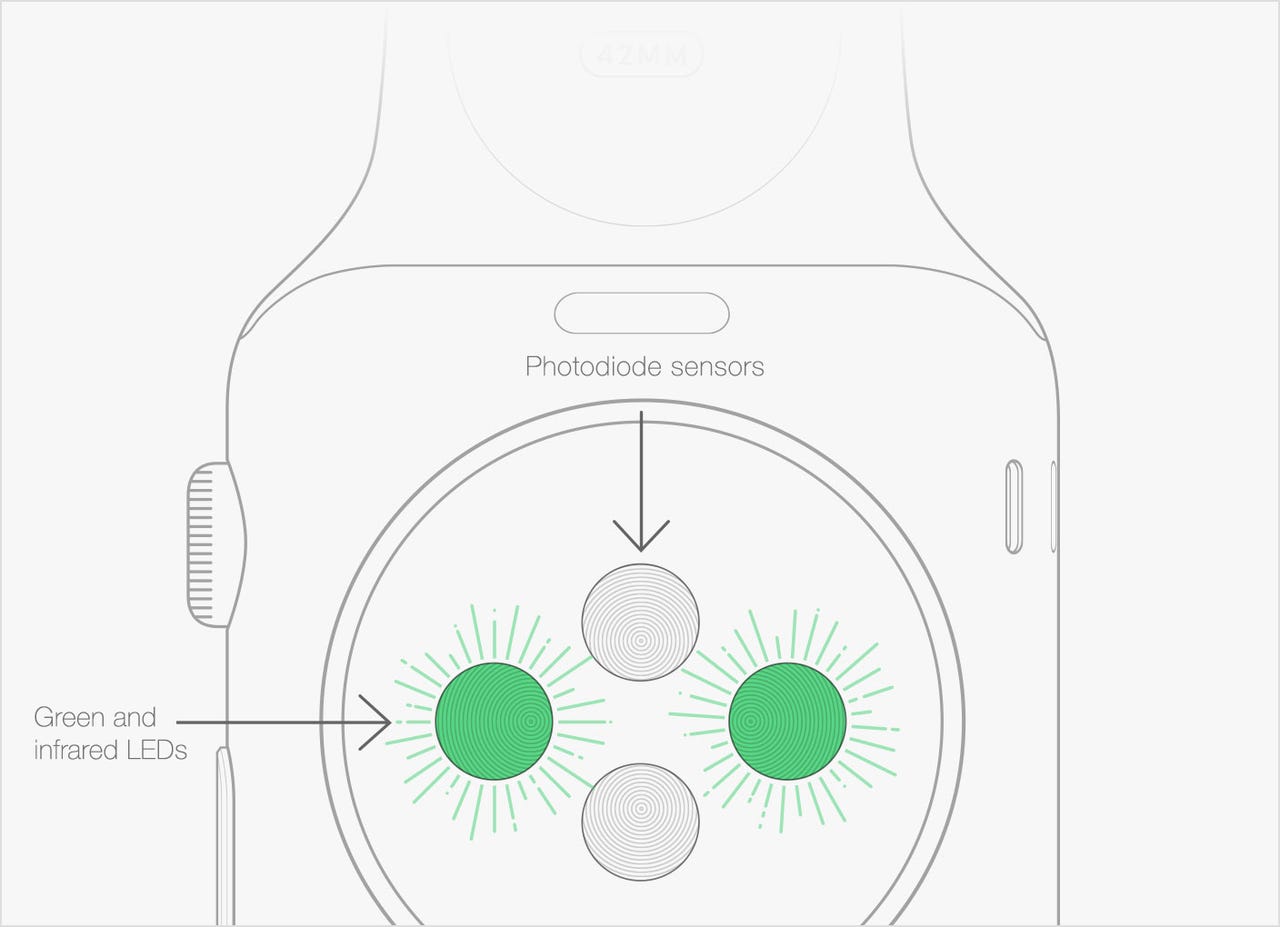Apple already has the tech to ID you using your veins


The Apple Watch's heart-rate sensors could also be used for biometric identification.
Apple is exploring the use of the Apple Watch's heart-rate sensor to identify users by their vascular signature.
A US Apple patent published on Thursday and spotted by AppleInsider details how the company could add an identification function to the heart-rate sensor on the back of the Apple Watch.
The heart-rate sensor is an example of photoplethysmography and in the Watch's case, relies on a set of LED light emitters and light sensors to measure the amount of blood flowing through the user's wrist and calculate heart rate.
However, as Apple describes in the patent, the emitter and sensor combination could also be used to determine the unique way a user's blood vessels are arranged and so be employed as a method of biometric identification.
"Light emitters and light sensors can be used to perform biometric identification of a user based on identifying characteristics of the user's vasculature," Apple notes.
"For example, light information can be obtained at one or more light sensors, and the information can be compared with stored information associated with a user identity. Based on the comparison, the user of the device can be identified as having the user identity."
The feature could serve the same function that Touch ID does today, preventing anyone but the owner from activating the device, or for example, to log into an online banking account.
The patent was actually filed in 2013, well ahead of the Apple Watch's 2015 launch. It doesn't mention the Apple Watch, merely a device that can be strapped to the user's wrist, but it does add some color to how Apple was thinking of the hardware during its development.
It's not clear why Apple hasn't enabled such a feature given the Watch has the hardware to do it and could, if implemented, reduce the Watch's dependence on the iPhone.
The patent also explores using sensors to enable gestures for identification, such as a person rapidly moving their hand from the waist to the side of their head.
"The gesture may be recognized as a gesture associated with the identification process. Additionally, the first time period of the identification gesture may be determined. That is, once the gesture is recognized from the motion information, an initiation time and a finish time of the gesture can be determined."
The same patent surfaced in Europe last year as reported at the time by Patently Apple.
MORE ON APPLE
- Microsoft: 'Apple can no more secure your iPhone than Google can secure Android'
- Apple begins selling carrier unlocked iPhone 7, iPhone 7 Plus in US
- Apple's disgracefully outdated Mac lineup is killing sales
- Apple announces new R&D center in Shenzhen, China to foster developer talent
- Apple gets board seat at Didi Chuxing following $1b investment
- Apple iOS 10 adoption outpaces all earlier versions after glitchy start
- TechRepublic: iOS 10 gallery: The big changes in the new version of Apple's mobile OS
- CNET: Supreme Court grills Apple, Samsung over value of design patents